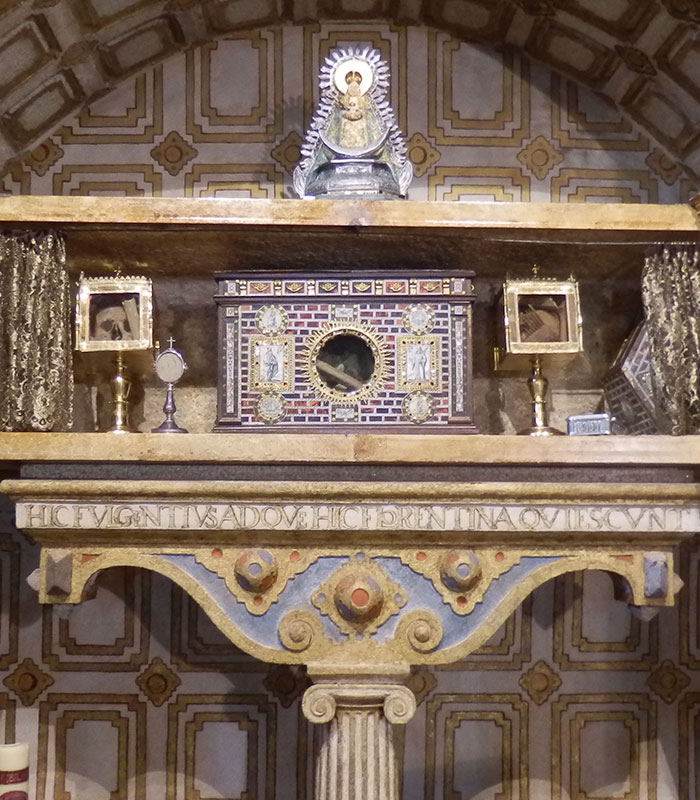According to legend, in 1223 a farmer found a marble sarcophagus in an olive grove. Inside laid the remains of San Fulgencio and Santa Florentina, 6th-century saints of Visigothic origin from Cartagena and resident in Seville. These holy remains are kept in the Church of San Juan Bautista in a reliquary given by King Philip II. In the fascinating history of this church, which could be a cathedral from its imposing appearance and alongside which arose the village of Berzocana, late Roman, Visigothic, Mudejar, baroque, and Renaissance elements combine.
The image of this church, which was declared a National Monument in 1977, stands out above the remainder of the village owing to its large size. Indeed the east-west axis of the central nave reaches a length of 35 metres. The documented data available situate the origin of the building in the14th and 15th centuries. However, certain elements such as the column which supports the pulpit, the marble base of the font of holy water, and a granite relief of San Juan Evangelista suggest the existence of a former Visigothic church on the site. Subsequently it was almost completely demolished with the exception of the tower, which is all that is left of the original building. It was rebuilt in the 16th century by the Bishopric of Plasencia to give it its current Gothic-Renaissance appearance.
On the exterior of the building it is possible to distinguish the various construction stages with different aesthetics and styles. Towards the west rise the façade and the high rectangular tower with a doorway of masonry and an archivolt of a lancet arch representing the most ancient stage of what is left standing. On the side of the Epistle (the right-hand side facing the altar) we we can see a portico with a segmented arch and a Renaissance doorway. On its upper part there is a haut-relief of San Juan Bautista. The particular combination of brick and stone indicate that this is a Mudejar ensemble closely related to the usual model of the architecture of the Order of Santiago which is widespread in Extremadura. Other outer elements such as the large semicircular windows, a lobulated archivolt, the large window of the transept, and a balustraded cross speak to us of Renaissance style.

